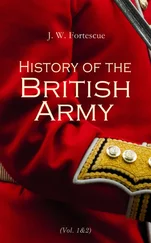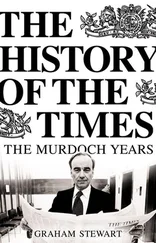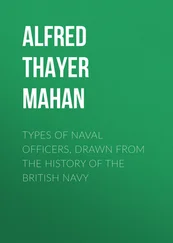J. Fortescue - The History of the British Army
Здесь есть возможность читать онлайн «J. Fortescue - The History of the British Army» — ознакомительный отрывок электронной книги совершенно бесплатно, а после прочтения отрывка купить полную версию. В некоторых случаях можно слушать аудио, скачать через торрент в формате fb2 и присутствует краткое содержание. Жанр: unrecognised, на английском языке. Описание произведения, (предисловие) а так же отзывы посетителей доступны на портале библиотеки ЛибКат.
- Название:The History of the British Army
- Автор:
- Жанр:
- Год:неизвестен
- ISBN:нет данных
- Рейтинг книги:4 / 5. Голосов: 1
-
Избранное:Добавить в избранное
- Отзывы:
-
Ваша оценка:
- 80
- 1
- 2
- 3
- 4
- 5
The History of the British Army: краткое содержание, описание и аннотация
Предлагаем к чтению аннотацию, описание, краткое содержание или предисловие (зависит от того, что написал сам автор книги «The History of the British Army»). Если вы не нашли необходимую информацию о книге — напишите в комментариях, мы постараемся отыскать её.
The History of the British Army — читать онлайн ознакомительный отрывок
Ниже представлен текст книги, разбитый по страницам. Система сохранения места последней прочитанной страницы, позволяет с удобством читать онлайн бесплатно книгу «The History of the British Army», без необходимости каждый раз заново искать на чём Вы остановились. Поставьте закладку, и сможете в любой момент перейти на страницу, на которой закончили чтение.
Интервал:
Закладка:
1509.
1511.
His first step was to increase his standing force by the creation of a second body-guard of men-at-arms,[92] composed of young men of noble blood; the reason given being that there were far too many such young men in the kingdom who were untrained in arms. The corps, as might have been expected with the best dressed sovereign in Europe, was so gorgeously arrayed that it perished after a few years under the weight of its own cost. His next act was more practical, a writ to the sheriffs for the better enforcement of the Statute of Winchester, which is interesting for its attempt to restore the command of the forces of the shore to their original holders.[93] Concurrently, however, we encounter a large number of the old-fashioned indents and commissions of array, all issued in prospect of English intervention in the eternal strife of the Hapsburgs and the Valois.[94] In 1512 an expedition was sent to the south of France, and there the defects of the army were lamentably seen. Although the importation of hand-guns and arquebuses shows that England was not blind to the progress of fire-arms in Europe, this force was armed principally if not exclusively with the old-fashioned bows and bills, and worse than all, these bows, which had been issued from the stores in the Tower, were found nearly all of them to be useless. Moreover, the victuals were "untruly served" to the men, their pay was withheld from them, and, acutest of all grievances, they could get no beer. The Council of War, in which the command was vested, could never agree as to a plan of operations, and though it kept the men thus inactive made no attempt to drill or exercise them. The natural result was a mutiny. One large band struck work for eightpence a day in lieu of the regular sixpence, several others swore that nothing should keep them from going home, and the disturbance was only quelled by the hanging of a ringleader.[95]
1513.
Henry seems to have had suspicions of the state of affairs, for in the same year Acts were passed to renew the existing statutes against desertion and fraud; though from the incessant re-enactment of these particular provisions it is clear that they were either easily evaded or negligently enforced. In the following year, however, Henry took the field in person in Normandy, where his presence appears materially to have altered the complexion of affairs. His force was designed to have consisted of thirty thousand men, but was reduced by impending trouble with Scotland to less than half that number. The details of its organisation are still extant, and it is curious to find that, after but two generations of severance from France, the French terms vanguard, battle, and rearguard have given place to fore-ward, mid-ward, and rear-ward. Another novelty is the addition of wings, which had formerly been attached to the vanguard only, to the midward also; which was clearly a new departure.[96] There is again a strong tendency, which after a year becomes a rule, to make the tactical units of uniform strength, one hundred men being the common establishment for a company. Every captain too has an officer under him called his petty captain, a name which appears in the statutes of the previous reign, and was not yet displaced by the title, as yet reserved to the King's deputies only,[97] of lieutenant. The ensign[98] does not yet make his appearance, for the grouping of companies is strictly territorial, and one standard apparently alone is allowed to each shire. Every company, however, has the distinctive badge of its captain, and the archers of the King's Guard are dressed in uniform of white gaberdines. Lastly, there are in the army fifteen hundred Almains, the landsknechts of whom account was given in a previous section, eight hundred of whom, "all in a plump," marched immediately before the King. Possibly this place of honour was granted to them to kindle the emulation of the English, but more probably because Henry, following the evil example of the French, trusted more to trained mercenaries than to his own subjects. We shall constantly meet with such contingents of aliens among the English during the next forty years, until at last England awakes, like every other nation in Europe, to the truth that her own children, as carefully trained, are worth just double of the foreigners.
The most remarkable of the mounted men in this army were the Northern Horsemen, who, called into being at some uncertain period by the eternal forays on the Scottish border, now appear regularly on the strength of every expedition as perfectly indispensable. They were light cavalry, the first deserving the name ever seen in our army, and probably the very best in Europe. They wore defensive armour of back and breast and iron cap, carried lance and buckler or sometimes a bow, and were mounted on "nags" which were probably nearer thirteen than fourteen hands high. For duties of reconnaissance they were perfect, and they must be reckoned the first regular English horse that were the eyes and ears of the army. We shall see them at a later stage merged in a mounted body much resembling them, namely the demi-lances, which were destined, during the period of transition that is before us, to fill the place already almost vacated by the men-at-arms.
There is no need to dwell on the incidents of a not very eventful campaign. The panic flight of the French at the Battle of the Spurs upheld the old belief that they could not stand before the English; and the siege and capture of Terouenne under the personal direction of Henry helped to confirm it. A fruitless attack on an English convoy, curiously resembling the Battle of the Herrings in its main features, also helped to maintain the ancient reputation of the English archers. Lastly, the siege of Tournay gave Henry an opportunity of showing off some of his new artillery. There were twelve huge pieces, called the twelve apostles, of which he was particularly proud; but as St. John stuck in the mud and was unfortunately captured, it is well not to say too much of them. But the French were by no means impressed with the appearance of their old enemies in the field. "The English," wrote Fleuranges in a patronising way, "are good men and fight well when parked in a strong position, but otherwise I make no great account of them."
1513,
September.
September 9.
But while Henry was plying his apostles against Tournay, some still older enemies of the nation had formed a very different opinion of the English. For in September, Thomas, Earl of Surrey, met the Scots at Flodden Field, and dealt them a blow from which they never wholly recovered. The odds against the English were heavy, for they could bring but twenty-six thousand men against forty thousand or, as some say, eighty thousand Scots, and the position taken up by James the Fourth was so strong that Surrey could not venture to attack it. With ready intelligence he made a detour from south to north of the Scottish host, and James, who had not attempted to molest him during the movement, hurried down, fearful of being cut off from his base, to meet him in the open field. The sequel is an example of the helplessness of pedantry, even of the newest pattern, in the face of genuine military instinct. The Scotch had studied the methods of the landsknechts; they were armed principally with pikes; they were drawn up in five huge battalions, after the Swiss model, and they advanced to the attack in silence "after the Almain manner." Lastly, they had with them some of the finest artillery hitherto seen.[99] Yet all this availed them nothing. The English too were formed, after a method which had lately come into fashion, in two divisions, fore-ward and rear-ward, each with two wings; but Surrey boldly wheeled both into one grand line,[100] holding but one small body of horse in reserve, and appears to have overlapped the cumbrous masses of the enemy. There is no need to give details of the battle; it began between four and five in the evening and was over in an hour. The English leaders seem to have shown not only bravery but skill. The English archers as usual wrought havoc against unarmoured men; the English bills got the better of the Scottish pikes, and the English light cavalry, admirably handled, twice saved the infantry from defeat. Ten thousand Scots were slain, and James himself, with the head and heir of almost every noble house in Scotland around him, lay covered with ghastly wounds among the dead. He had, from some whimsical return to an obsolete practice, dismounted his men-at-arms, who, in obedience to the new fashion which counselled protection against the new-fangled bullets, were clad in the heaviest armour. Arrows fell harmlessly from them, and even bills could not cut them down with less than half a dozen strokes; but they could not fly, and the bill-men did not weary of killing. And so on Flodden Field was shown a forecast of what was to be seen later in Italy, when infantry, finding men-at-arms prostrate on the ground, hammered them to death like lobsters within their shells before they could break through their armour.
Читать дальшеИнтервал:
Закладка:
Похожие книги на «The History of the British Army»
Представляем Вашему вниманию похожие книги на «The History of the British Army» списком для выбора. Мы отобрали схожую по названию и смыслу литературу в надежде предоставить читателям больше вариантов отыскать новые, интересные, ещё непрочитанные произведения.
Обсуждение, отзывы о книге «The History of the British Army» и просто собственные мнения читателей. Оставьте ваши комментарии, напишите, что Вы думаете о произведении, его смысле или главных героях. Укажите что конкретно понравилось, а что нет, и почему Вы так считаете.












